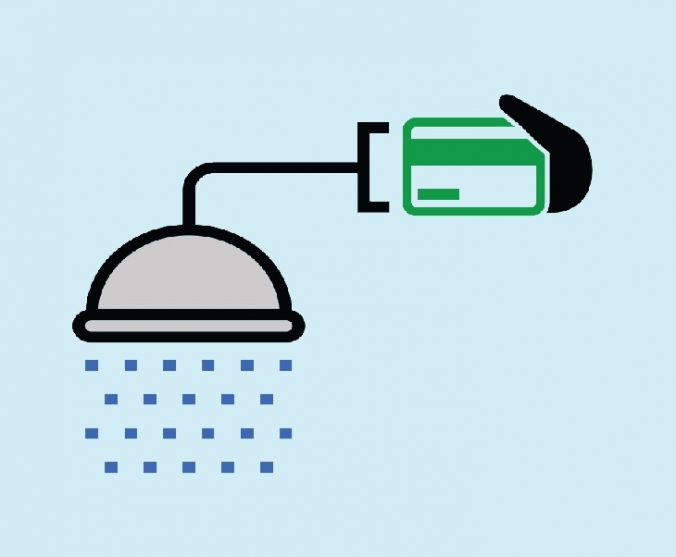We’re all in agreement that how you pay for it matters, but is it possible that when you pay for it matters too? Some utilities are experimenting with prepayment plans, in which customers pay in advance for a set amount of service.
Prepayments are made on a monthly basis, and customers are given real-time (or near real-time) information about their usage and how much remains in their account for the month. Unused funds can be rolled over to the next month or refunded at the end of the year. If it seems the customer is going to use more than their allotment, they can choose to top off their payment. If a customer does not top off their payment but goes over their allotment, their service is cut off (often done remotely to reduce the costs of administering the program). Programs may or may not have a system of warning the customer to cover their usage to avoid cutoff.
Because all payments are made in advance, customers don’t need to undergo a credit check or pay a deposit to initiate service, and they avoid late payment fees—even if they need to top off their account. Customers also benefit from more predictable payments and increased information about their usage, while utilities benefit from reduced risk of delinquent payments and increased customer satisfaction. (See a great video explanation of prepayment plans from Brunswick Electric Membership Cooperative here.)
Recent tallies found 200 electric utilities in 34 states offering prepayment programs, with about half of those programs located in the Southeast and 25 programs in North Carolina. While there are currently an estimated 660,000 meters on prepaid service, Prepaid Energy Hub predicts there will be 2.6 to 2.8 million by 2021.
The evidence suggest that customers on prepayment plans use less energy. Recent studies by E Source and Distributed Energy Financial Group (DEFG) found that prepayment programs can result in energy savings of five to 14 percent. At first glance, this seems to be a win for efficiency. With traditional utility billing, bill information always arrives too late—the water or electricity has been used and there’s nothing the customer can do to change it for that month. This is unlike many other services consumers are used to, such as cell phone plans or filling their gas tanks. With more information provided through prepayment plans, customers can make day to day decisions more easily about their usage, and avoiding owing additional payments encourages them to conserve.
This, however, assumes that customers have the ability to reduce usage through behavioral changes and energy efficiency or water conservation upgrades. Another possible explanation, however, is that the reduced usage we see with prepayment plans is due to forced shut offs, or customers making changes that result in discomfort. This worries consumer advocates since it raises health and safety concerns, and because low-income customers may be affected disproportionately.
There have yet to be conclusive studies definitively identifying the source of the conservation found with prepayment plans. The DEFG study mentioned above did find that 92 percent of prepay customers are “very satisfied” or “somewhat satisfied” with their new billing plan, suggesting that those customers’ savings are not due to disconnection or deprivation.
Despite estimates that there are currently an estimated 660,000 meters on prepaid service around the U.S., the EFC found less evidence of water prepayment plans. If you know of ones being offered, please comment below.
Carol Rosenfeld is a Senior Project Director at the Environmental Finance Center at the University of North Carolina. Her work focuses on financial models and mechanisms that governments, non-profits, universities, and other public organizations can implement to increase the deployment of energy efficiency and renewable energy. Carol holds an MBA from the Yale School of Management and a degree in Civil and Environmental Engineering from Princeton University. She is a LEED Accredited Professional and a Senior Fellow in the Environmental Leadership Program.





Leave a Reply